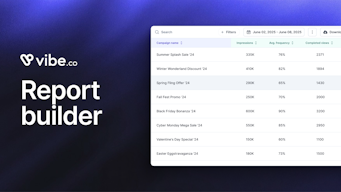What are attribution models? Definition and guide
What is an attribution model? A guide to attribution modeling
There are practically as many paths to purchase as there are brands with an online presence. You probably have your own unique approach to get prospects aware of your brand, engage with them, and turn them into customers, but for it to be effective, your strategy should not be arbitrary or based on subjective considerations. With the competition becoming fiercer than ever across all industries, marketers depend on attribution models to gain access to relevant data and boost the success of their campaigns. What is an attribution model in Google Analytics and on other platforms? How does attribution modeling work? Here is what you need to know.
What is an attribution model in marketing? Definition
Attribution modeling is a strategy that marketers can rely on to analyze the marketing touchpoints that stand out at specific steps of the customer journey. This approach allows you to assign credit to the right channels and to examine how users search for a product, compare it to others, consider buying it… all the way to the actual purchase. Thanks to attribution models, you can study every part of the customer journey and assess which marketing strategies are driving leads and which ones are not.
If you wish to distribute credit over several touchpoints and to observe how your whole sales funnel is affected by marketing interactions, you can use multi-touch modeling.
Why are attribution models important for your campaigns?
If you run a number of campaigns across several different platforms and media channels, keeping track of everything and of how well everything is performing can be complicated. How can you figure out which mix of display ads, PPC keywords, Google AdWords, SEO efforts, and link-building decisions is generating the most relevant leads? Or how prospects enter the sales funnel to successfully find themselves on the other end of the conversion path? The answer is through attribution models.
Attribution modeling allows you to visualize every customer journey at a glance, helping you understand what happens at every stage of the customer’s experience. For instance, one customer may have heard of your website from a friend and visited in search of a particular product, which they found immediately and purchased; but a different user could very well have bought the same item without following the same journey. Instead, they might have clicked on your display ad and been redirected to your social media account. From there, several positive interactions may have resulted in this person visiting your website. Once in that space, they may have noticed your blog and read a few articles, one of which would have led them to click a link to a product page, at which point a suggestion for other products they may like would have caused them to click, and eventually purchase the exact same product as the client from our first example!
Hence the importance of crediting every single touchpoint leading up to a sale if you wish to understand exactly what motivates your customers’ decision to buy your products. Knowing which touchpoints lead to conversion gives you an edge when it comes to building your marketing campaigns and where you place your calls to action.
How to choose and set an attribution model for your campaign?
Although there are several attribution models to choose from, including AI-based software and solutions like the Google Analytics attribution models and Facebook’s own version, they are typically divided into two main categories.
SINGLE-TOUCH ATTRIBUTION MODELS
If you wish to assign credit to a single touchpoint along your customer journey, then single-touch attribution model, as you might have guessed, is the ideal solution. Selecting the very first step of the customer journey or the very last step that customer took when deciding to make a purchase is usually the most useful approach. Keep in mind that while you will be able to analyze a very specific piece of data, it won’t give you the whole picture.
MULTI-TOUCH ATTRIBUTION MODELS
The multi-touch attribution model, on the other hand, doesn’t restrict how many touchpoints you can look at along the customer journey. And for each one of them, you can assign as much weight as you deem appropriate. Some solutions offer predetermined values automatically assigned to specific categories of touchpoints, while other attribution models let you assign custom values for a more personalized result.
HOW TO MEASURE THE EFFECTIVENESS OF YOUR ATTRIBUTION MODEL?
There is no one-size-fits-all solution when it comes to recommending the “best” attribution model for your business, which is why you will need to test a few approaches out at first. In turn, having just the right attribution model will boost the efficiency of your marketing strategy. If you keep refining your strategy based on what your attribution model suggests, but can’t seem to notice any positive results, then the attribution model in question is likely unsuitable.
Don’t forget that your marketing strategy is only one of the many factors that affect your prospects’ decision to become customers. Similarly, the attitude of one – or even a handful —of users won’t reflect the success of your entire approach. Be sure to allow enough time for an adjustment to fully take effect before you assess whether or not you should modify anything else. Ideally, allow a few months between every change, unless your sales seem to drop suddenly or inexplicably!
The more complex your average consumer journey is, the larger the number of media you use, and the bigger your company is, the more comprehensive your attribution model should be. The same applies if your purchasing model involves multiple visits from the same customer, who needs time to reflect on their potential purchase.
If you run a smaller business and only market your brand through a website and owned social media channels, then a more to-the-point approach to attribution models might work better for you.
When used to their full potential, attribution models give you valuable information about your customers’ behaviors and motivations. These data driven insights can then be leveraged to optimize customer experience and generate consistent sales.


